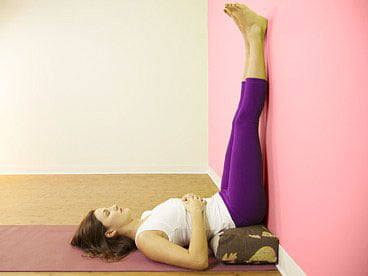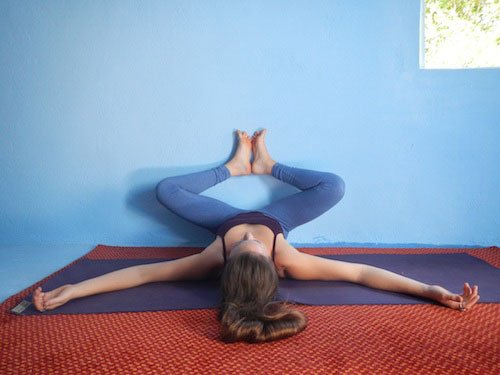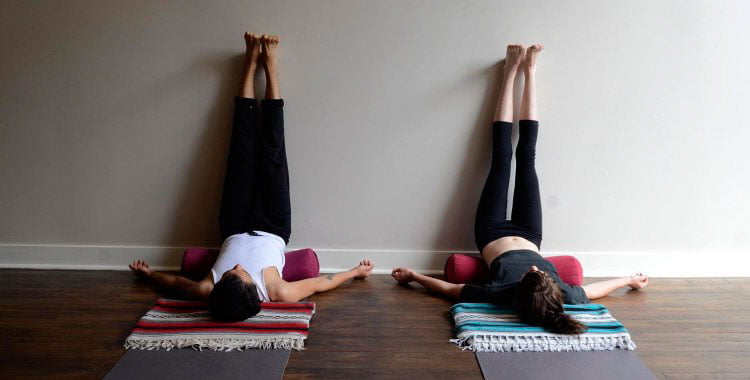How to do Viparita Karani or Legs Up the Wall Pose (easy inversion) – restorative yoga inversion.
Yoga classes in Milton Keynes
Viparita Karani – Legs Up The Wall Pose is a passive pose that relieves congestion in the legs and is restorative for the entire nervous system. Many inversions are not beginner’s poses but this pose can be safely practiced by those new to yoga.
1. Sit with your right hip and shoulder touching a wall and have your knees bent and heels close to your buttocks.
2. Keep the hip near the wall as you lean back on your hands. Take your legs up the wall as you lower onto your elbows. Then lay on your back on the floor and check your body is symmetrical.

3. With the buttocks close to the wall and legs vertical, choose your arm position.

3. Supported Viparita Karani variation with bolster or folded blanket for comfort.

5A. Viparita Karani variation with soles of the feet together.
5. To vary this pose, bring the soles of the feet together and slide the heels down the wall, so the outer edges of the feet are against the wall and knees wide apart [A]. Alternatively, you can let the legs fall out to a wide ‘V’ shape to stretch the inner thighs [B].

5B. Viparita Karani – Legs out to a wide in ‘V’ shape.
TIPS
Gaze: Close the eyes and focus on releasing with the breath.
Counter Poses: Any standing posture.
Lighten:
- Bend your knees a little if it is difficult to bring your buttocks against the wall.
- Bend the knees down to the chest if your feet get numb.
Effect: Restorative, calming.
CAUTION
Inversions should not be practised by anyone who is suffering from high blood pressure or has eye problems, such as detached retina or glaucoma. They should be avoided by women during menstruation. In the case of previous neck injuries, heart problems, or pregnancy, the advice of an experienced teacher should be sought. Most inversions are not beginner’s poses and it is strongly recommended that the postures are learned from an experienced teacher.

